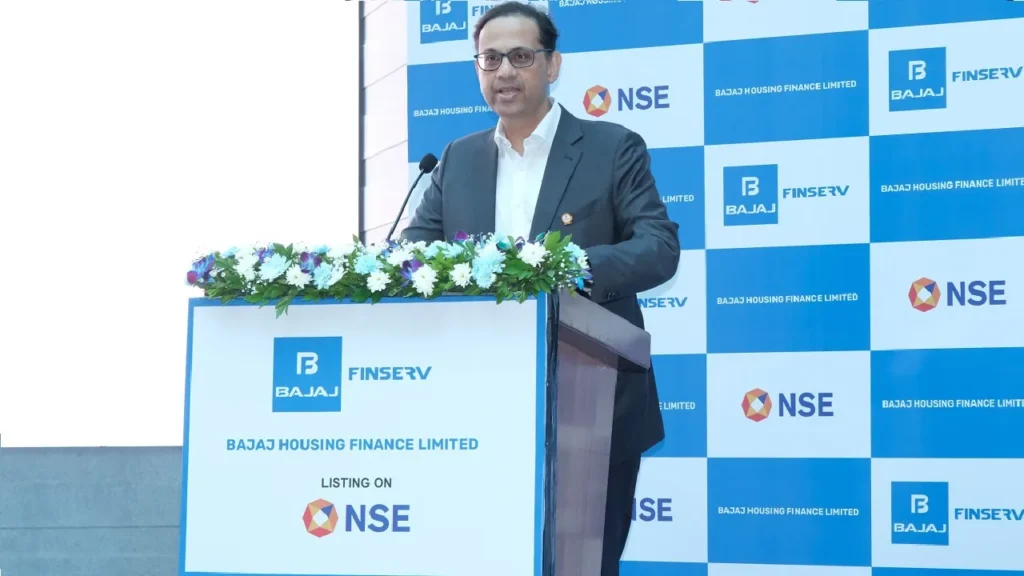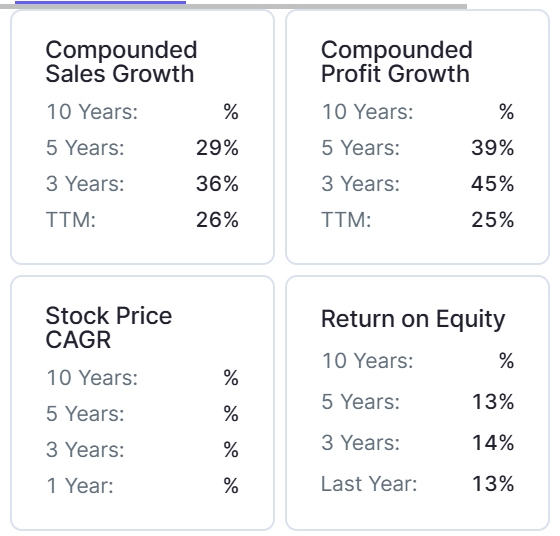Bajaj Housing Finance Limited, commonly known as BHFL, was listed on the NSE on September 16, 2024. BHFL is the 2nd largest housing finance company in India. This article explores the Bajaj Housing Finance growth potential and Bajaj Housing Finance share price target 2025 to 2050.
About Bajaj Housing Finance

Bajaj Housing Finance Limited (BHFL), established in 2008, is a subsidiary of Bajaj Finserv and provides various housing finance services. It offers home loans, loans against property, and balance transfer options to help individuals and businesses meet their financial goals. The company is known for its affordable interest rates, flexible repayment options, and transparent processes, which make it easier for people to buy homes or invest in real estate.
Bajaj Housing Finance Business Model
- Loan Business: Bajaj Housing Finance Limited (BHFL) offers housing finance solutions to people and businesses, including loans for home purchases, building, reconstruction, and property purchases. It also provides loan balance transfers and add-on loans. BHFL makes money from interest income on these loans, providing reasonable rates and flexible terms to meet the different demands of its customers.
- Asset Financing: BHFL finances residential and commercial real estate properties, providing developers and buyers with money for property development and investment. It designs finance agreements to provide regular cash flows and long-term customer connections, resulting in consistent revenue generation.
Bajaj Housing Finance Fundamental Analysis
| Stock Name | Bajaj Housing Finance Ltd. |
|---|---|
| NSE Symbol | BAJAJHFL |
| Market Cap | ₹ 103029 Cr. |
| 52W High | ₹ 188 |
| 52W Low | ₹ 103 |
| Stock P/E (TTM) | 47.6 |
| Book Value | ₹ 24.0 |
| Dividend Yield | 0.00 % |
| ROCE | 9.54 % |
| ROE | 13.4 % |
| Face Value | ₹ 10.0 |
| Industry PE | 19.4 |
| Price to book value | 5.09 |
| Debt to equity | 4.11 |
| PEG Ratio | 1.22 |
| Quick ratio | 0.75 |

Bajaj Housing Finance Balance Sheet
| Particulars | March 2024 | March 2025 |
|---|---|---|
| Equity Capital | 6,712 | 8,328 |
| Reserves | 5,521 | 11,619 |
| Borrowing | 69,129 | 82,072 |
| Other Liabilities | 464 | 790 |
| Total Liabilities | 81,827 | 102,809 |
| Fixed Assets | 123 | 141 |
| CWIP | 1 | 0 |
| Investments | 1,939 | 2,533 |
| Other Assets | 79,765 | 100,134 |
| Total Assets | 81,827 | 102,809 |
| Share holder | Sept 2024 | Dec 2024 | March 2025 |
|---|---|---|---|
| Promoters | 88.75% | 88.75% | 88.75% |
| FIIs | 1.68% | 1.11% | 1.12% |
| DIIs | 1.83% | 0.82% | 0.72% |
| Public | 7.63% | 9.32% | 9.40% |
| No. of Shareholders | 23,09,518 | 26,45,574 | 26,05,368 |
Key Factors Driving Bajaj Housing Finance Growth
- Growing Demand for Housing: As more people look to buy homes, particularly in urban and smaller cities, the demand for home loans is increasing.
- Affordable Interest Rates: Bajaj Housing Finance offers competitive interest rates, making it easier for people to choose their services.
- Easy Digital Processes: Bajaj Housing Finance has a strong focus on technology, allowing customers to apply for loans and track their progress online, which saves time and effort.
- Customized Loan Options: Bajaj Housing Finance provide flexible loan solutions, like home loans, loans against property, and balance transfers, to meet different customer needs.
- Bajaj Finserv support: As a subsidiary of Bajaj Finserv, Bajaj Housing Finance has strong backing and financial stability, which allows it to expand more.
- Focus on Smaller Cities: By expanding into Tier 2 and Tier 3 cities, Bajaj Housing Finance is reaching out to more people who require home loans.
- Rising Income Levels: With more people earning better salaries, the demand for housing loans is naturally increasing.
- Government Support: Housing schemes and tax benefits encourage more people to buy homes, boosting the company’s loan business.
- Strong Customer Trust: The company is known for being transparent and friendly, which keeps customers coming back and recommending their services.
- Good Risk Management: Bajaj Housing Finance uses advanced methods to assess loans and avoid bad debts, ensuring steady growth.
Pros of Investing in Bajaj Housing Finance Ltd.
- Expanding Loan Portfolio: As of September 2024, the company’s loan assets grew by 27% year-on-year to ₹898.78 billion, reflecting increased demand for home loans.
- Low Non-Performing Assets (NPAs): As of September 2024, the company’s gross bad loans accounted for 0.29% of total loans, demonstrating effective risk management and high asset quality.
- Successful IPO and Market Valuation: Bajaj Housing Finance raised $782 million in an initial public offering (IPO) in September 2024, valuing the company at approximately $6.94 billion, reflecting strong investor confidence.
- Support from Parent Company: As a subsidiary of Bajaj Finserv, the company benefits from strong financial backing and a reputable brand, which strengthens its market position.
- Sector Growth Prospects: With India’s residential real estate market projected to triple by 2029, Bajaj Housing Finance will benefit from this growth.
- Strong Sales Growth: Bajaj Housing Finance sales have grown at a 36% CAGR over the last three years.
- Strong Profit Growth: Bajaj Housing Finance’s profits have grown at 45% CAGR over the last three years.
- High Promoter Holding: Bajaj Housing Finance has a strong promoter holding of 88.8%, which shows the high confidence of promoters in the company’s future growth and stability.
- Increase in FIIs Holding: Foreign Institutional Investors (FIIs) have increased their holding to 1.12% in March 2025 from 1.11% in December 2024, which indicates growing confidence in Bajaj Housing Finance’s future potential by the FIIs.
Cons of Investing in Bajaj Housing Finance Ltd.
- Exposure to Market Risks: As the housing finance sector is dependent on the real estate market, any slowdown could have an impact on the company’s growth and profitability.
- Interest Rate Fluctuations: As interest rates rise, demand for loans may fall, affecting the company’s profit margins.
- Economic Slowdowns: During difficult economic conditions, such as recessions or inflation, people may postpone purchasing homes, which could harm the company’s business.
- High Competition: Bajaj Housing Finance faces tough competition from banks and other housing finance companies, which may reduce its market share.
- Dependence on Borrowings: Like most financial companies, Bajaj Housing Finance relies on borrowing to fund its loans. Any increase in borrowing costs could impact its profitability.
- Regulatory Changes: The housing finance industry is highly regulated. Sudden changes in government policies or RBI guidelines may present difficulties.
- Non-Performing Assets (NPAs): While the company manages risk well, any rise in NPAs due to defaults on loans can negatively impact Bajaj Housing Finance share price target.
- Limited Diversification: As the company focuses primarily on housing finance, it may struggle if the real estate sector experiences a significant downturn.
- Customer Retention Challenges: With many options available in the market, retaining customers may become difficult if competitors offer better deals or services.
- Low Return on Capital Employed (ROCE): Bajaj Housing Finance’s 5-year average ROCE is 8.49%, which shows that it is not using its capital efficiently to generate profits.
- Overvaluation Concern: Bajaj Housing Finance stock is trading at a PE ratio of 47.6 and a (P/B) ratio of 5.16, which shows that its stock is significantly overvalued compared to its earnings and assets.
- High Financial Risk: Bajaj Housing Finance has a high debt-to-equity ratio of 4.11, indicating a strong dependency on debt. This increases financial risk, raises interest costs, and may have an impact on profitability.
- Low Interest Coverage Ratio: The interest coverage ratio of Bajaj Housing Finance is 1.46, which shows that the company is struggling to pay interest.
- Decrease in DIIs Holding: Domestic Institutional Investors (DIIs) have reduced their holding to 0.72% in March 2025 from 0.82% in December 2024, indicating a decline in DIIs’ confidence in the company’s future growth prospects.
By the end of 2025, the Bajaj Housing Finance share price is expected to be around ₹160 in normal conditions. In a bear market, it might be ₹150, and in a bull market, it may cross its 52-week high of ₹188.
| Target | Rupees (₹) |
|---|---|
| 1st Target | 150 |
| 2nd Target | 160 |
| 3rd Target | 188 |
In 2026, the Bajaj Housing Finance share price is expected to be around ₹195 in a normal situation. In a bear market, it might be ₹180, and in a bull market, it may cross ₹260.
| Target | Rupees (₹) |
|---|---|
| 1st Target | 180 |
| 2nd Target | 195 |
| 3rd Target | 260 |
According to our analysis, the Bajaj Housing Finance share price is expected to be around ₹250 in 2027. In a bear market, it might be ₹215, and in a bull market, it may cross ₹340.
| Target | Rupees (₹) |
|---|---|
| 1st Target | 215 |
| 2nd Target | 250 |
| 3rd Target | 340 |
According to our analysis, the Bajaj Housing Finance share price may trade near ₹300 by 2028; bearish conditions could pull it down to ₹260, while a strong bull run might lift it to ₹430.
| Target | Rupees (₹) |
|---|---|
| 1st Target | 260 |
| 2nd Target | 300 |
| 3rd Target | 430 |
In a normal situation, the Bajaj Housing Finance share price is projected to be approximately ₹390 in 2029. In a bear market, the value may be as low as ₹310, while in a bull market, it may rise to ₹560.
| Target | Rupees (₹) |
|---|---|
| 1st Target | 310 |
| 2nd Target | 390 |
| 3rd Target | 560 |
In a normal situation, the Bajaj Housing Finance share price is projected to be approximately ₹500 in 2030. In a bear market, the value may be as low as ₹445, while in a bull market, it may rise to ₹730.
| Target | Rupees (₹) |
|---|---|
| 1st Target | 445 |
| 2nd Target | 500 |
| 3rd Target | 730 |
By 2035, the Bajaj Housing Finance share price is projected to be around ₹1400 under normal conditions. In adverse markets, the price could fall to ₹980, while favorable conditions might push it up to ₹2150.
| Target | Rupees (₹) |
|---|---|
| 1st Target | 980 |
| 2nd Target | 1400 |
| 3rd Target | 2150 |
Under normal conditions, the Bajaj Housing Finance share price might hit ₹2150 by 2040. A bearish trend could lower it to ₹2000, whereas a bullish surge could raise it to ₹6000.
| Target | Rupees (₹) |
|---|---|
| 1st Target | 2000 |
| 2nd Target | 3200 |
| 3rd Target | 6000 |
In 2050, the Bajaj Housing Finance share price is expected to be around ₹10500 in a normal situation. In a bear market, it might be ₹8000, and in a bull market, it may go up to ₹35,000.
| Bajaj Housing Finance Share Price Target 2050 | Rupees (₹) |
|---|---|
| 1st Target | 8000 |
| 2nd Target | 15,000 |
| 3rd Target | 35,000 |
| Years | Target Price |
|---|---|
| Bajaj Housing Finance Share Price Target 2025 | ₹150 to 188 |
| Bajaj Housing Finance Share Price Target 2026 | ₹180 to 260 |
| Bajaj Housing Finance Share Price Target 2027 | ₹215 to 340 |
| Bajaj Housing Finance Share Price Target 2028 | ₹260 to 430 |
| Bajaj Housing Finance Share Price Target 2029 | ₹310 to 560 |
| Bajaj Housing Finance Share Price Target 2030 | ₹445 to 730 |
| Bajaj Housing Finance Share Price Target 2035 | ₹980 to 2150 |
| Bajaj Housing Finance Share Price Target 2040 | ₹2000 to 6000 |
| Bajaj Housing Finance Share Price Target 2050 | ₹8000 to 35,000 |
Conclusion
Bajaj Housing Finance Limited’s future looks promising due to its strong business model, which is supported by Bajaj Finance’s credibility and the growing demand for housing finance in India. With its customer-centric approach, technology-driven services, and competitive pricing, Bajaj Housing Finance is well-positioned to expand in the housing market.
Disclaimer
This article is for educational purposes only. It is not a stock recommendation and should not be treated as such. Please ask your financial advisor before making any investment decision.
Also Read: JP Power Share Price Target 2025 to 2050

